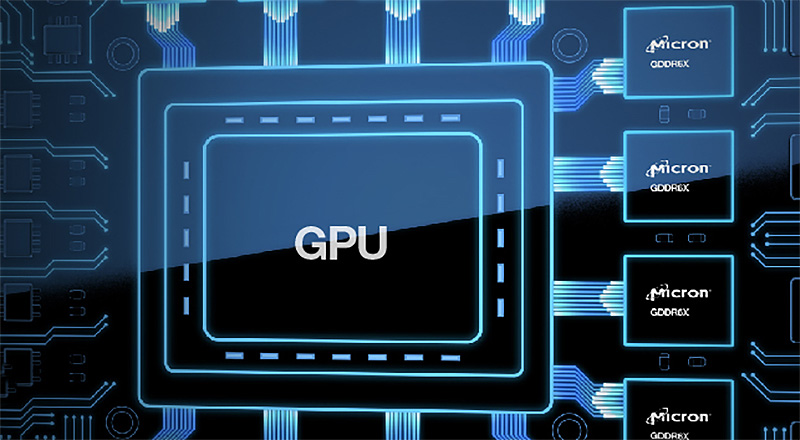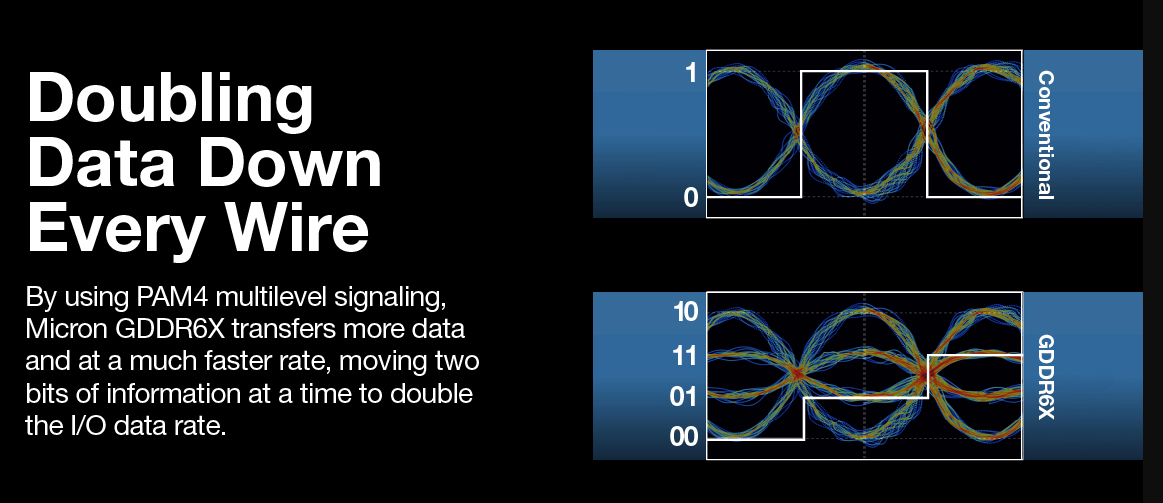Next-gen Nvidia GPUs could come with blisteringly fast 24Gbps GDDR6X memory
Micron says its new GDDR6X chips, currently found in the RTX 3090 Ti, haven't reached their maximum potential.

The next generation of graphics cards could feature GDDR6X memory that runs at 24Gbps. Memory manufacturer Micron has said that its new 16Gb GDDR6X memory chips "have unprecedented headroom" of up to 24Gbps, though we've only seen these max out at 21Gbps on the brand new Nvidia GeForce RTX 3090 Ti.
Compare that to the 14/16Gbps GDDR6 memory that is in use across many GPUs today and you're looking at some absurdly rapid memory in this latest iteration of GDDR6X. And where else will that be put to good use than in the coming generation of graphics cards out of Nvidia, known as Lovelace or Ada.
It's possible we'll see these 16Gb high-performance GDDR6X chips make their way into Nvidia's next-generation Lovelace generation cards, seeing as they're not being run at their full potential today. Micron has said it has a "performance roadmap" in place to reach the touted 24Gbps.
I would suspect that this would be kept aside exclusively for high-end Lovelace GPUs. Cheaper, more widely available memory chips (from other vendors, such as SK Hynix and Samsung) are still likely be favoured for the high-volume cards lower down the price-to-performance stack.
It's also likely that Nvidia will be the only GPU vendor to utilise GDDR6X. Micron and Nvidia tend to work together closely on these faster memory specifications—having also once worked on GDDR5X that would find its way into Nvidia's high-end Pascal graphics cards. That doesn't entirely discount AMD, or even Intel, from using these chips with future high-end GPUs, but history would suggest it will remain an Nvidia exclusive in the gaming GPU space.
As for non-gaming GPUs, these tend to rely on differing memory technologies, such as HBM2E.

Best CPU for gaming: The top chips from Intel and AMD
Best gaming motherboard: The right boards
Best graphics card: Your perfect pixel-pusher awaits
Best SSD for gaming: Get into the game ahead of the rest
The key to high speeds with GDDR6X is something called PAM4 signalling. PAM4, or Pulse Amplitude Modulation 4-level, is effectively a technique of retaining integrity within a signal across an electrical connection, allowing for the transmission of more bits each period. The result is, ultimately, greater bandwidth.
Keep up to date with the most important stories and the best deals, as picked by the PC Gamer team.
It's not only GDDR6X memory that utilises PAM4. In fact, PCI-SIG, the consortium that develops each and every PCIe specification, has announced that PAM4 with the upcoming PCIe 6.0 standard.
In the meantime you're most likely to find PAM4 signalling inside your gaming PC with a high-end Nvidia graphics card. The RTX 3090 Ti uses these recent 16Gb chips, but you'll find the slightly slower 8Gb chips on the RTX 3080, RTX 3080 Ti, and RTX 3090.

Jacob earned his first byline writing for his own tech blog, before graduating into breaking things professionally at PCGamesN. Now he's managing editor of the hardware team at PC Gamer, and you'll usually find him testing the latest components or building a gaming PC.


